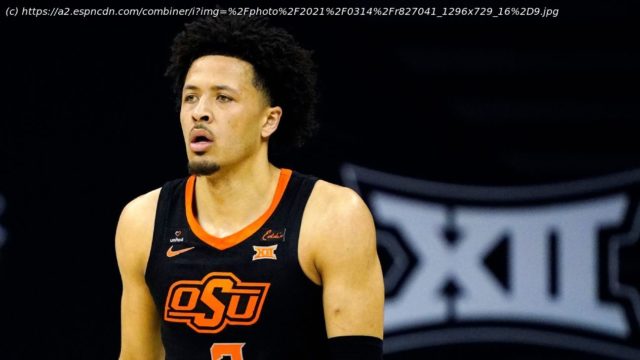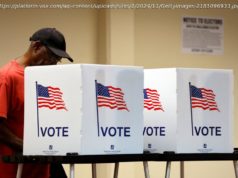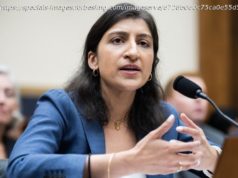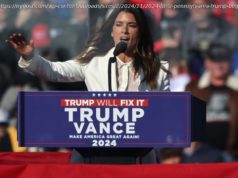From Gonzaga to Mount St. Mary’s, here’s your brief look at every team appearing in the 2021 men’s NCAA tournament field.
Now that the 2021 NCAA tournament field is set, you’ll need the right information to make the right picks in your March Madness bracket. We’re here to help with our annual 68-team preview. The 2021 NCAA tournament will tip off on Thursday, March 18, with the First Four, while the first round begins Friday, March 19. All games will be played in the state of Indiana, culminating with the Final Four at Lucas Oil Stadium on April 3 and 5. Please visit this link for the complete 2021 NCAA tournament schedule. For a list of the 31 automatic bids that have reached March Madness, visit ESPN’s “tickets punched” page. Here’s a brief look at every team in the field: Gonzaga Bulldogs This might be the best team Mark Few has ever coached. Yes, that’s a strong statement about a program that had first-round picks Rui Hachimura and Brandon Clarke on the same team in 2018-19, two seasons after losing to North Carolina in the national title game in 2017, but the Bulldogs have never had a group with this volume of talent, depth and efficiency (52% clip against man,61% against zone, per Synergy Sports data). Jalen Suggs (14.3 PPG,5.5 RPG,4.5 APG,2.0 SPG) is a projected top-five pick, and he can be the best player on the floor whenever he wants to be. Corey Kispert, the West Coast Conference Player of the Year who has made 44% of his 3-point attempts, is also a projected lottery pick in ESPN’s latest NBA mock draft. Drew Timme would be the No.1 player for 90% of the teams in the country. And Florida transfer Andrew Nembhard leads a strong collection of reserves who’ve helped this team beat Power 5 opponents such as Kansas, West Virginia, Virginia and Iowa. The undefeated No.1 overall seed has a legitimate shot at the first perfect season since Indiana’s run in 1976. Baylor Bears You could make the case that no team has ever inherited a situation worse than the chaos Scott Drew had to face when he took over a Baylor program in 2003 that had dealt with a murder, improper payments and severe NCAA sanctions. Since then, he has turned Baylor into a perennial contender. Last season, Baylor won 23 in a row during a significant stretch. This season, its one regular-season loss was at Kansas days after the team had returned from a three-week pause. Jared Butler (17.1 PPG,5.0 APG,2.1 SPG,44% from the 3-point line) and Davion Mitchell (13.8 PPG) are projected first-round picks per ESPN’s latest NBA mock draft. MaCio Teague is averaging 15.8 PPG and connecting on nearly 40% of his 3-point attempts. The Bears lead the nation with a 43% clip from 3. And they force turnovers on nearly one-fifth of their opponents’ possessions. After the 83-74 loss to Oklahoma State in the Big 12 tournament semifinals, however, it’s fair to ask if this Baylor group still owns the Teflon defense the program enjoyed prior to its lengthy pause. Illinois Fighting Illini During a three-game stretch late in the season, Illinois beat Nebraska, Wisconsin and Michigan — the latter by 23 points in Ann Arbor. Ayo Dosunmu (20.9 PPG,6.2 RPG,5.2 APG,1.1 SPG,40% from the 3-point line), the Wooden Award contender and NBA prospect, did not play in those games. Illinois weathered late-season drama without its star, but now that he’s returned, the Big Ten tournament champion Illini possess the talent and depth to handle any team in the field. Kofi Cockburn made 66.4% of his shots inside the arc during Big Ten play, the top mark in the league. But the emergence of freshman Andre Curbelo, who averaged 15.7 PPG in his last four regular-season games, has only enhanced this program’s potential. It has been 16 years since Illinois lost to North Carolina in the national title game in 2005, but this group has a chance to make a similar run. Michigan Wolverines When AD Warde Manuel introduced Juwan Howard as the team’s new head coach in 2019, the former Fab 5 star stood at the podium and cried before uttering one word: “Wow.” That’s also how Wolverines fans have felt this season, while watching a team that could capture its first national championship since Glen Rice led the program to a title in 1989. Once you get past what feels like a weird outlier — a 75-57 loss at Minnesota in January — you see a team with the talent, balance and poise to make a run in the Indianapolis bubble. Michigan and freshman Hunter Dickinson are proof that a modern college team can still thrive around a big man. Entering the postseason, Michigan had averaged 112 points per 100 possessions (54% from inside the arc,42% from the 3-point line) while holding its opponents to a 39% clip inside the arc with Dickinson on the floor, per hooplens.com. Despite a strong recovery after a long pause, however, devastating news could change things. If Isaiah Livers (13.1 PPG,6.0 RPG,43% from the 3-point line), who missed Saturday’s Big Ten semifinal matchup against Ohio State due to a foot injury, is unavailable, this will not be the same team, and those Final Four dreams will face a significant hurdle. Alabama Crimson Tide If you were flipping through games this season and stumbled onto a matchup involving Alabama, you might have seen Nate Oats’ squad put together a great come-from-behind rally. They seem comfortable in those moments. On Saturday, Alabama was down by 15 points before bouncing back to secure a 73-68 win over Tennessee in the SEC tournament semifinals. The Tide are a quandary for any opponent. With 6-foot-5 John Petty (12.7 PPG) and the versatile,6-8 Herbert Jones (10.8 PPG,6.1 RPG), the SEC player of the year, Alabama can play small ball and use its top-10 tempo to beat teams in transition. But that speed doesn’t result in chaos. Alabama made 38% of its 3-point attempts in league play and maintained the SEC’s most efficient defense, too. It won the SEC regular season and tournament titles and has lost just one game — an 81-66 road loss to Arkansas on Feb.24 — since Feb.6. Houston Cougars Caleb Mills, the team’s top scorer last season, transferred after playing in four games. Nate Hinton, the No.3 scorer from a season ago, turned pro. Fabian White, fourth in scoring in 2019-20, suffered a torn ACL before the season and missed 19 games before returning Feb.18 against Wichita State. Still, Kelvin Sampson’s team locked up a top-two seed after powering through the American Athletic Conference tournament with just three losses, relying on a hard-nosed brand of basketball from a group that’s a bully when it has to be. But this isn’t ugly basketball. The Cougars finished the regular season ranked in the top 10 in adjusted offensive and defensive efficiency per KenPom. And Quentin Grimes, a former five-star recruit at Kansas, played like an All-American. Iowa Hawkeyes The good news for Fran McCaffery’s crew is that Iowa played some of its best basketball in the final weeks of the season. The Hawkeyes finished 7-1 in their last eight games of the Big Ten season, a stretch that included a sweep of Wisconsin and a road win over Ohio State. The other positive development is that Luka Garza (23.8 PPG,8.7 RPG,1.6 BPG), the Wooden Award favorite throughout the season, is the star of their show. He finished second to Obi Toppin in the race for the honor last season, but he’s more efficient at the 3-point line (43%) and the charity stripe (71%) this season. The bad news? The injury bug has arrived: Jack Nunge (7.1 PPG) is out for the season. But that just means Joe Wieskamp (15.0 PPG,6.6 RPG) & Co. have to play at a higher level, which they did throughout the Big Ten tournament. Ohio State Buckeyes Just after Ohio State rattled off road wins over Rutgers, Illinois, Wisconsin, Iowa and Maryland, the NCAA tournament selection announced its top 16 seeds through Feb.12 and the Buckeyes had secured a No.1 slot. But a four-game losing streak entering the Big Ten tournament ended that dream. Still, the run was proof that Chris Holtmann’s team could fight through a tough stretch and beat good teams outside Columbus, Ohio, the same task the Buckeyes accepted in their run to the Big Ten tournament title game, and the same one they’ll try to pull off in the NCAA tournament. Duane Washington (15.3 PPG) and E.J. Liddell (16.0 PPG), however, can’t do it alone. The Buckeyes will need better interior defense, a problem against the league’s top bigs, and consistency from Kyle Young, who scored 18 points in a February win over Maryland but didn’t record double-digit points again for a month after that effort. Arkansas Razorbacks After a 31-point road loss to Alabama on Jan.16, Eric Musselman’s squad didn’t lose another SEC game in the regular season, turning a 2-4 start in league play into a 13-4 second-place finish. Their success this season is tied to an overlooked freshman who quickly evolved. Moses Moody (17.0 PPG,5.8 RPG,38% from the 3-point line), a projected lottery pick in ESPN’s latest NBA mock draft, has made 58% of his assisted spot-up attempts, per Synergy Sports data. And Arkansas has made 53% of its shots with Moody on the floor this season, per hooplens.com. He’s one of the four players averaging double figures for a program that had won nine in a row prior to Saturday’s loss to LSU in the SEC tournament semifinals. Kansas Jayhawks Back in January, Kansas didn’t look like a typical Kansas team. Bill Self had not yet found the right rotation and a team that had lost Devon Dotson and Udoka Azubuike from last season’s squad clearly hadn’t filled that void. But then February arrived and the Jayhawks seemed to make a conscious choice to use elite defense to pull them through the final stretch of the season and it worked. As it prepared for its matchup against Texas in the semifinals of the Big 12 tournament, Kansas had not surrendered more than one point per possession to an opponent since its 91-79 loss at West Virginia on Feb.6. KU has gone 8-1 in the past nine games. David McCormack, who averaged 16.7 PPG in his past four games, is expected to return for the NCAA tournament after missing the Big 12 tournament due to COVID-19 protocols. After Kansas left the Big 12 tournament following a positive test, however, it’s unclear how the team will be affected in the Indianapolis bubble. Texas Longhorns Shaka Smart entered the season facing pressure as his search for an NCAA tournament victory during his tenure continues. But when it became clear that Texas would have no trouble earning a spot in the field, the chatter ended. That’s fitting for a program that swept Kansas in the regular season and gained momentum with a 8-2 rally over its last 10 and a Big 12 tournament championship. The backcourt is stacked with gamers: Courtney Ramey, Andrew Jones and Matt Coleman III. Greg Brown and Kai Jones are a pair of big men who are both projected first-round picks in ESPN’s latest mock draft, too. This group has the balance that North Carolina used to win the 2017 national title. Both teams made just over 35% of their 3-point attempts and more than 51% of their shots inside the arc. West Virginia Mountaineers Remember the Bob Huggins who used to attack teams with the “Press Virginia” style and make them unravel by halftime? Well, this isn’t that team. This season, West Virginia led the league in free throw rate (71% accuracy in Big 12 play) and was second overall in offensive efficiency. Derek Culver (14.6 PPG,9.8 RPG) and Miles McBride (15.4 PPG) stabilized the Mountaineers after Oscar Tshiebwe transferred after playing just 10 games. But don’t forget Taz Sherman. West Virginia averaged 107 points per 100 possessions with the 6-4 guard on the floor and 97 points per 100 possessions without him. Florida State Seminoles Last season, Leonard Hamilton led his team to the ACC’s regular-season championship but never had an opportunity to go after his first national title because the NCAA tournament was canceled. This season, he molded the ACC’s most efficient offensive team (40.3% from the 3-point line in ACC play) along with a defense that led the league with a 45% clip inside the arc for opposing teams. Scottie Barnes, a projected lottery pick in ESPN’s latest mock draft, had recorded double digits in scoring in four of his last seven games in the regular season prior to the ACC tournament. He’s the No.3 scorer behind RaiQuan Gray (12.4 PPG) and M.J. Walker (13.1 PP,44% from the 3-point line). Oklahoma State Cowboys Cade Cunningham (19.6 PPG,6.4 RPG,3.6 APG,1.4 SPG,41.2% from the 3-point line) is the projected No.1 pick. He’s a freshman phenom. Oklahoma State will enter each game with the most talented player on the floor. Forget everything that happened in the first half of the season. Cunningham and Oklahoma State have played like a top seed and real contender in recent weeks, a run that has included victories over Texas and Texas Tech, a sweep of Oklahoma and two wins over West Virginia (one without Cunningham). All of that came before Oklahoma State’s win over eventual No.1 seed Baylor in the Big 12 tournament semifinals on Friday. This run feels like the stretch UConn had with Kemba Walker in 2011 or maybe the magic that Syracuse found with Carmelo Anthony in 2003. The top of the bracket with Michigan, Illinois, Baylor and Gonzaga is strong. But Cunningham and Oklahoma State boast the talent to crash the party. Purdue Boilermakers Matt Painter’s squad quietly finished top-five in offensive and defensive efficiency in Big Ten play, per KenPom. The Boilermakers also finished fourth — ahead of Ohio State and Wisconsin — in the Big Ten standings with a 13-6 record. Few teams in America can match Purdue’s frontcourt size with 6-foot-10 Trevion Williams (15.2 PPG,8.8 RPG) and 7-foot-4 Zach Edey (8.9 PPG,4.5 RPG) in the paint. It’s still unclear if the Boilermakers can hang with the top-tier teams in America — they lost to Illinois, Michigan and Iowa by 40 points combined — but their 6-1 finish in the regular season suggests Painter’s crew is improving. Virginia Cavaliers The defending national champion secured the ACC’s regular-season title based on winning percentage with the league’s imbalanced schedule due to COVID-19. But the latter is also the reason the Cavs had to exit the ACC tournament after a positive test forced their withdrawal. At that point, Virginia’s season was in jeopardy, but the Cavs are here. This is another potentially exceptional and efficient Tony Bennett squad, one that made 39.1% of its 3-point attempts and finished second in defensive efficiency in league play. Marquette transfer Sam Hauser (15.8 PPG,6.8 RPG,44% from the 3-point line) and Jay Huff (13.1 PPG,6.9 RPG,2.5 BPG,41% from the 3-point line) are tough players. But this team doesn’t have the level of talent that guided the program to its first national title two years ago, so it will have to do it with balance and depth. Colorado Buffaloes Before his team faced Oregon State in the Pac-12 tournament final on Saturday, McKinley Wright IV had averaged 21 PPG over his past four games of a six-game Buffaloes winning streak.






